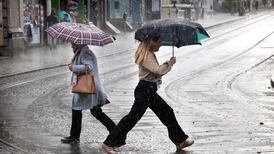An infestation of potentially harmful caterpillars has been destroyed after being discovered at a Dublin housing estate, the Department of Agriculture has said.
Nests belonging to the Oak Processionary Moth, or Thaumetopoea processionea, were found in four oak trees but have since been destroyed.
The moth poses potential risk to human and animal health because of numerous irritating hairs on its body.
According to the department, contact with these can provoke allergic reactions leading to skin rashes, conjunctivitis and respiratory problems such as pharyngitis and asthma.
READ MORE
Ireland has a protected zone status under EU plant health legislation for this pest, meaning it is to remain free of a harmful organism. The department did not identify the housing estate.
Anyone who comes across the caterpillars is urged not to touch them or their nests, or to try to remove them.
“The Department of Agriculture, Food and the Marine have commenced an investigation into this infestation,” it said in a statement.
“Surveying for this pest around the infected site has commenced and an intensive survey campaign using trapping methods and visual examinations of oak trees will continue over the coming weeks and months.”
The larvae of this moth mainly feed on oak foliage but have been observed on other species including acacia, birch, hornbeam, hawthorn, hazel and beech.
“The caterpillars feed on leaves and can cause severe defoliation leaving trees weakened and open to secondary infections from other pest and diseases,” the department said.
“Suspected sightings in Ireland should be treated with extreme caution and notified immediately to the Department.”











